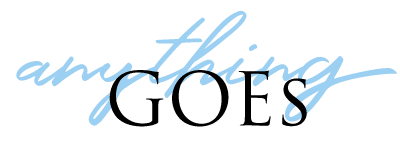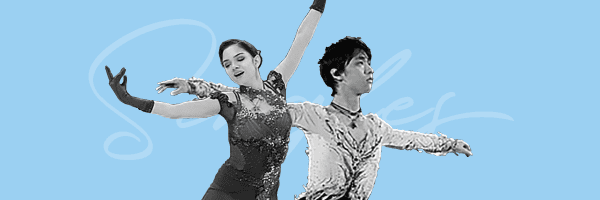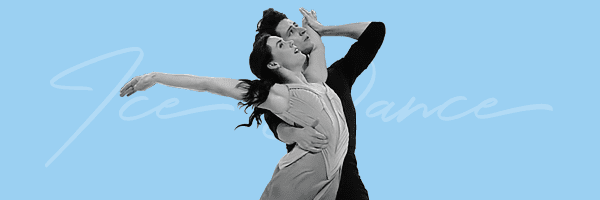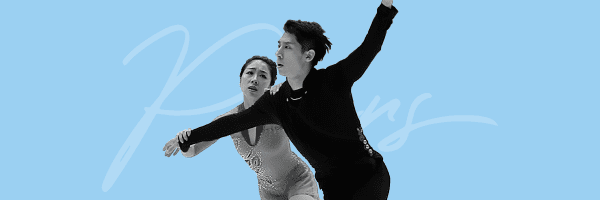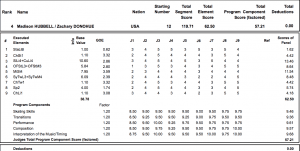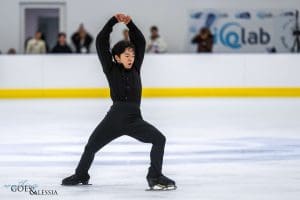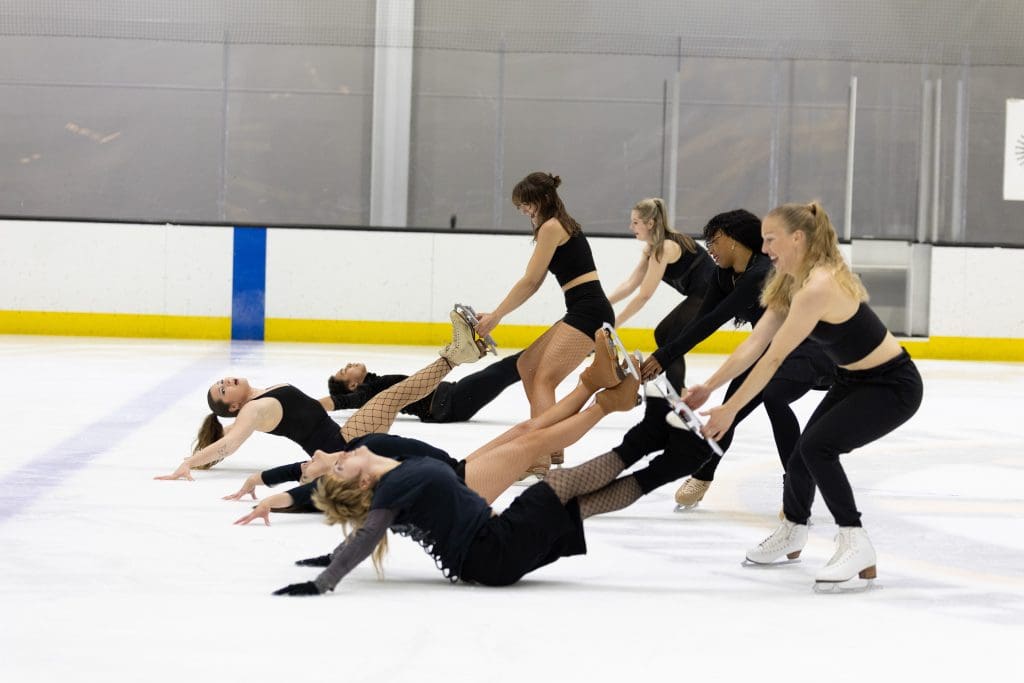
Created by American Ice Theatre (AIT), the American Contemporary Skating Festival (ACSF) brings together a diverse group of professional skaters and choreographers to collaborate and experiment with new forms of movement on the ice. Over four days in Boston, the participants exchanged ideas and participated in workshops and choreographic ensembles.
“We had 70 skaters from all over the world and nation, including the Netherlands, Switzerland, Germany, Belgium and Scotland. And as far west as California / Arizona,” noted AIT Co-Executive Director Kate McSwain.
ACSF intentionally showcases the experimental and the unpolished as well as the elegant and virtuosic. In doing so, the festival impressed me with the vast possibilities of contemporary skating, and its ability to bring together different segments of the figure skating world.
“Kate and Garrett have created such a special and unique space within figure skating,” said four-time US champion Jeremy Abbott, who participated in the Festival. “It’s a space that is safe and inviting, and to me, it truly feels like coming home. A lot of us have felt disenfranchised by skating at one point or another. Forced to fit ourselves into boxes that are chosen for us rather than ones that feel authentic to us. For me, the American Contemporary Skating Festival offers a space to stand in authenticity, to express, explore, play, and share freely while being held and uplifted. They have truly created a space that is free from judgment, and I know for myself and many others this space has helped to heal a wound that we may or may not have known we had. It allowed me to explore skating with the same love, joy, and curiosity that I did as a child.”
“I don’t know if it was this year’s Festival — or if it’s just the joy, passion, freedom, and community of the Festival itself that occurs every year…but somehow this event truly changes lives beyond skating,” McSwain shared. “I am quoting one of our first-time participants from overseas: ‘This event changed the trajectory of my existence as a human’…It gives a new perspective and it opens doors and reminds skaters from all backgrounds and experiences why we started skating in the first place.”
Learning Together on the Ice
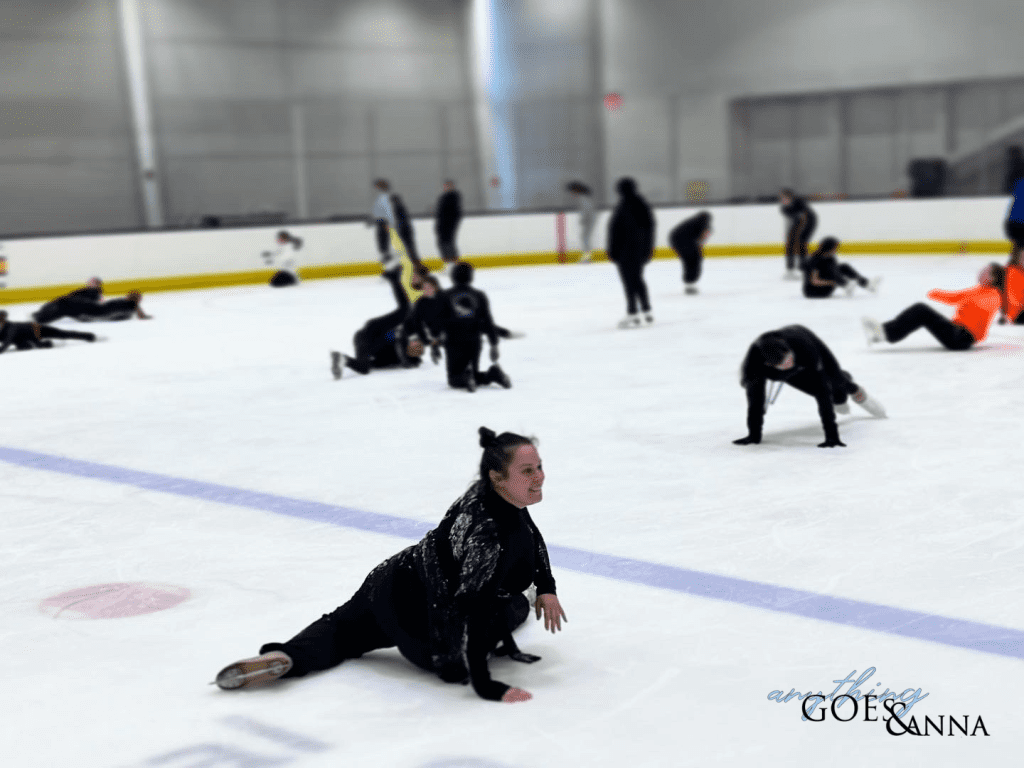
The festival culminated in a free on-ice workshop for the community, followed by a show.
The public workshop introduced contemporary skating at a level that was accessible to all. There were around 90 participants, ranging in age from toddlers to older adults, and in skill from learn-to-skate students in helmets to an Olympian (Abbott).
McSwain introduced the ground rules that underpin all AIT spaces: “Humans first, skaters second. You’re doing what you can, and you are going to respect one another on this ice. Second, everyone has something to learn and everyone has something to share. I don’t care if you’ve never stepped on the ice before, or you’ve been skating for years, or you’ve gone to the Olympics, I am here and excited to learn from you and all the things you might try today, because creative teaching is about exploration. I’m not here to think that I’m better than you, to teach you like I know everything, because I’m very much ready to learn from each of you as much as you are learning from us.”
The last rule might be the hardest for traditional skating to accept: “Everything you do is right.” Even mistakes can be an avenue to new ideas – and falling is encouraged.
AIT Co-Vice President Jimmy Morgan led us through some basic exercises, using different body parts to spell our names, experimenting with various sounds our blades can make, and trying out skids, toe pick and heel steps, and different ways to hold the free leg. And we experimented with falling, and what was possible when you get down onto the ice.

These challenges made me rethink the limits of my skate and my body. What would happen if I used my heel instead of my toe in a pivot? Could I convince my body that I wouldn’t get hurt if I did a butt spin (it looked so fun when others did it!)
Having pushed to these extremes, I found that returning to a simple glide and a clean edge was delightful. I could appreciate the alignment and the sweet spot in the middle of my blade that I usually take for granted.
I had a similar feeling watching the many performances that followed in the Festival’s show. The experiments were all interesting, some more compelling than others, a few truly astonishing in their inventiveness; yet, I was excited to see a layback spin or a beautiful spread eagle. I wouldn’t have appreciated those “classical” moments nearly as much without the experimental movements that surrounded them.
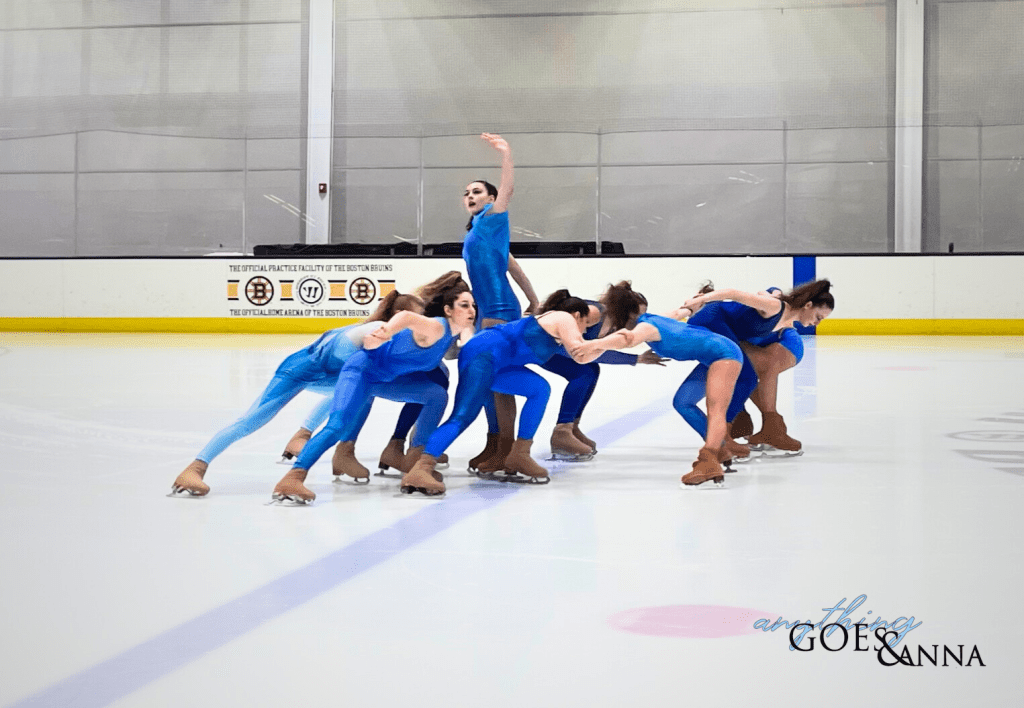
McSwain reminded the audience that many of the pieces they would see were the result of work over the weekend. “So they are workshop pieces. They may not be perfect, but the whole point is learning from the choreographic process of different choreographers. You’re also going to see a lot of different types and styles of contemporary skating. One piece may seem like you’re at the club. Another piece may seem very abstract like you’re truly watching an abstract modern dance piece. Another piece may seem a little bit more commercial. That’s actually what makes this such a beautiful community, that we have so many voices, music styles, movement styles, and we’re getting to share this with you.”
The show opened with one of the most polished pieces, “Blue” skated by the AIT Boston Professional Company. The program made use of the skaters’ bodies in sculptural ways, with flocking and formations that grouped the skaters, and synchro-type lifts.
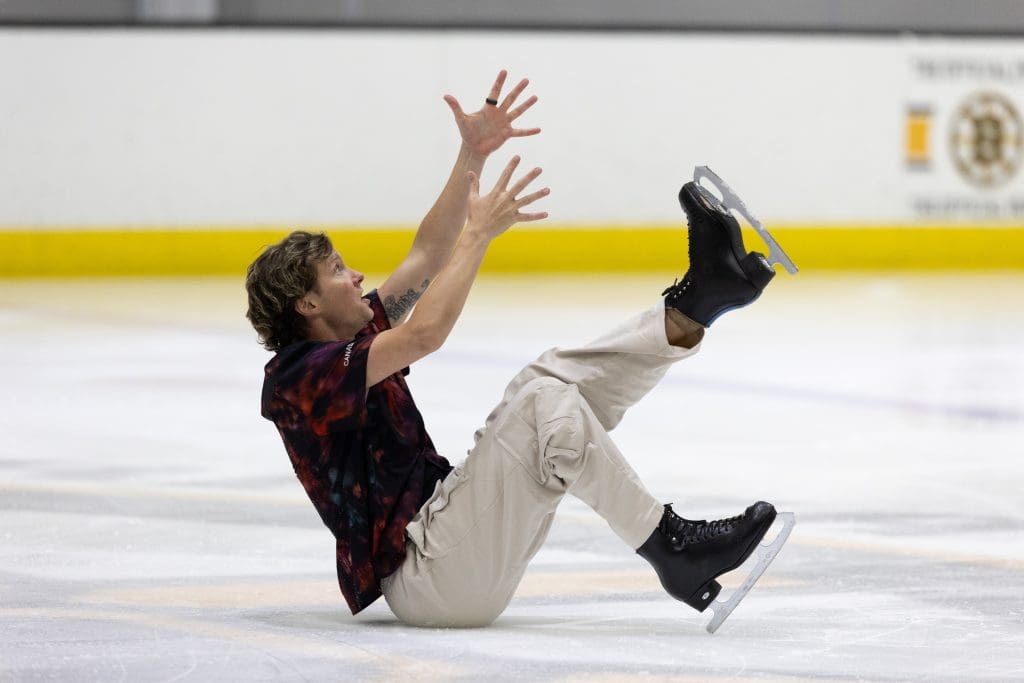
McSwain’s point about diversity was immediately proven by the next skater. Jeremy Abbott’s piece, “The Parasite” played with syncopated rhythms and changing tempo. He let his body hang like a rag doll, and collapsed onto the ice, as well as leaping off it in a double Axel.
“‘The Parasite’ started as a one-minute exploration that I created for AIT’s Master Choreography Techniques class”, explained Abbott. “It came from movement that I had wanted to explore, but didn’t feel confident enough to play with in my professional skating career. To be honest it almost never existed. I thought it was too hard and outside my comfort zone, so I had played with one or two other ideas before finally pushing through. It was silly and fun exploration of how I could move my body and play with time and tempo. I ended up turning it into a full piece that I performed through the 24/25 show season.”
Another fascinating solo piece was “Figures…hidden” by Joy Thomas. She combined the process the marking and skating school figures with “Hidden Figures”, the story of African-American women mathmaticians who calculated the early missions to space. I saw Thomas’ choreography as a commentary on the buried histories and undervalued labor that lie behind the precision and perfection of a final performance.
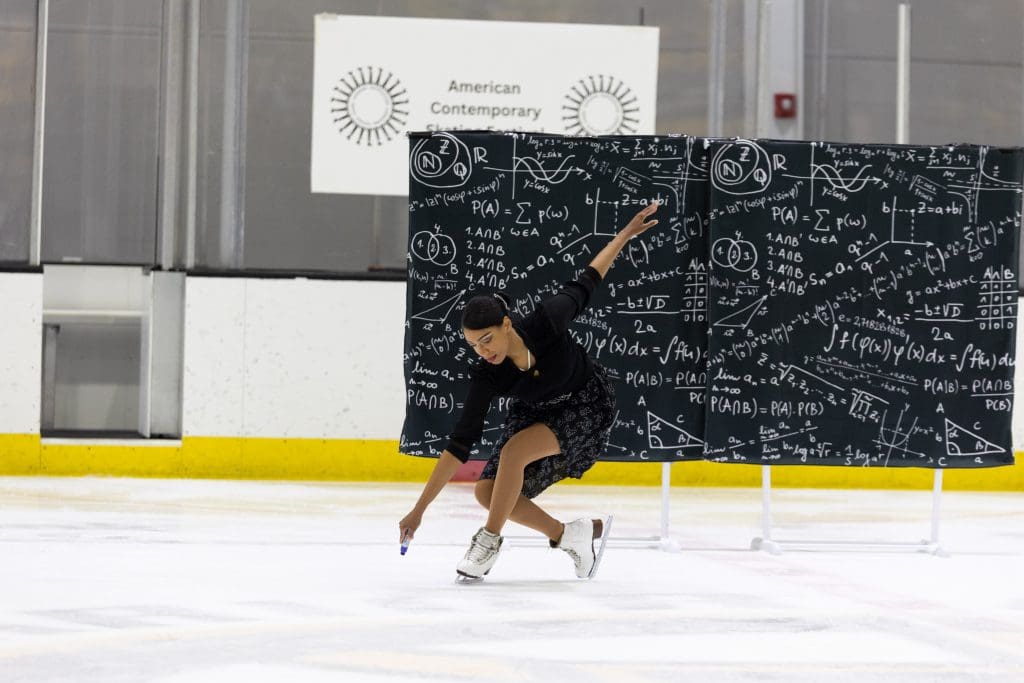
I also loved the duet “Nocturne”, choreographed by AIT Co-Executive Director Garrett Kling and skated by Kling and Lauren Gizinski. The two played with concepts of light and shadow, mirroring and at times diverging in a delicate dance.
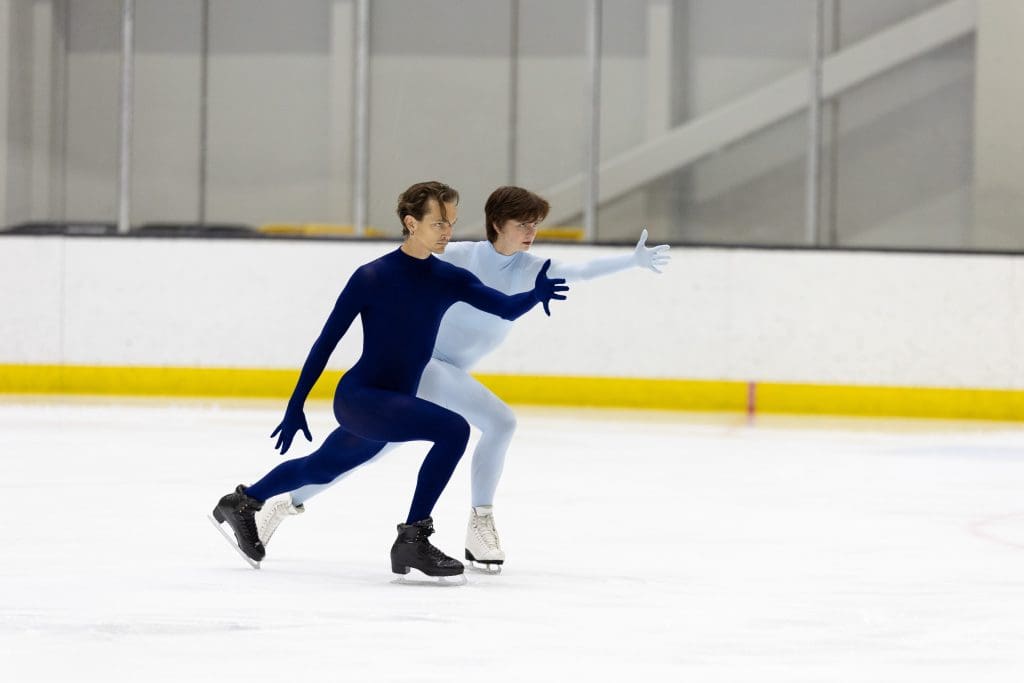
I was also deeply moved by “Tomorrow will Be Kinder” skated by sisters Alina and Ksenia Ponomarova. One of the final pieces of the showcase, the program left an emotional impact, as well as impressing me with exquisite skating skills.
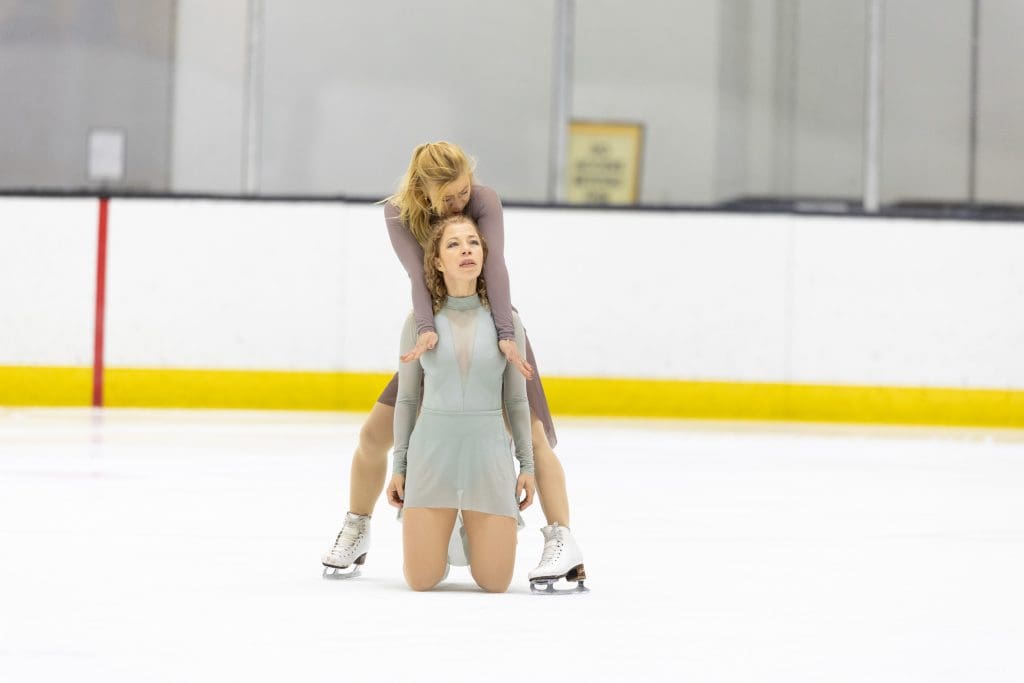
Perhaps the biggest highlight for me, however, was the duet “skater4skater” with its depictions of trans tenderness and struggle (watch On Ice Perspectives video).
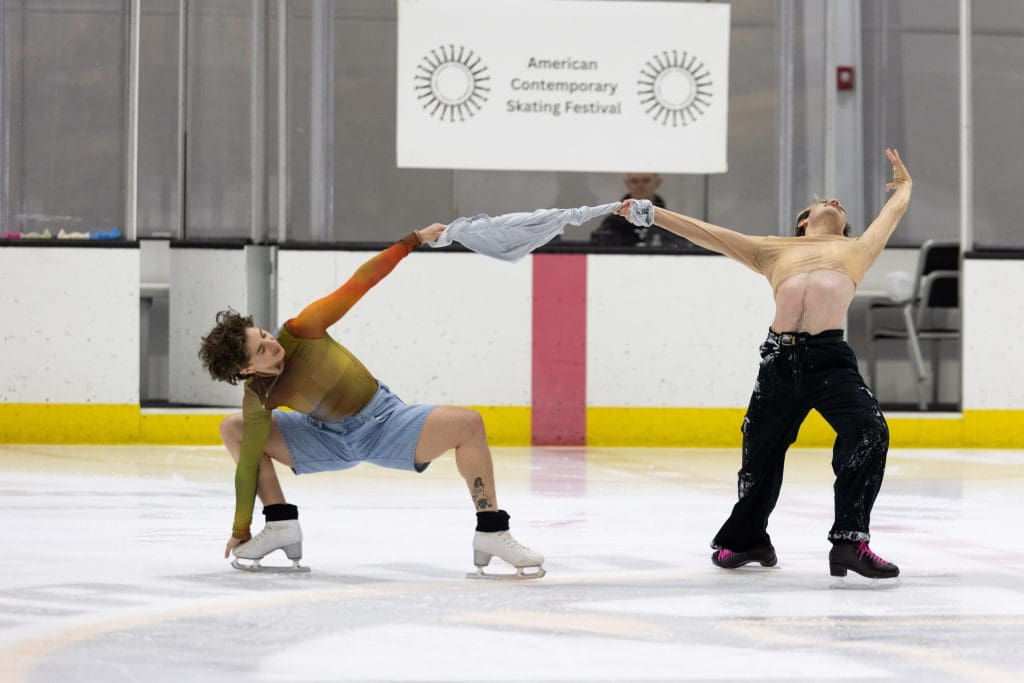
Oska Renee and BB McKain seemed to be fighting their own internal battles of identity and belonging. At times, they literally pulled each other out of the places where they were stuck. When the skaters could break free of that tension, they embodied joy and self-acceptance in each other’s company.
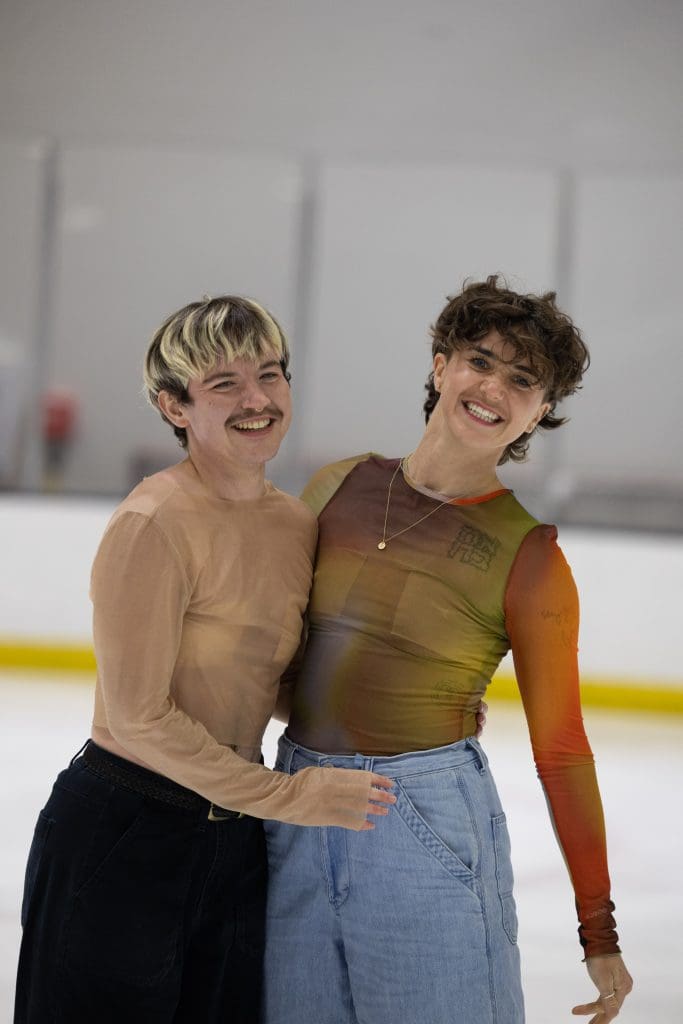
Oska Renee shared their process for the piece. “In tandem with our presentation at the ACS Fest which used trans-coded methods of art-making to create movement phrases, BB and I created a segment of this piece together using methods such as concrete poetry, the cut-out method, and body mapping. The duet was an extension of BB’s solo to “Voices” previously performed at the AIT Cleveland show. skater4skater tells a trans-for-trans love story upon layers of self-acceptance and self-actualization. We specifically sought to skate to music created by trans artists.”
They also affirmed: “Trans, intersex, and gender-nonconforming people belong in public life and in sports — for us, this is only a drop in the bucket of trans representation and visibility, and we acknowledge that this was made possible for us largely by the work of trans women of color who have always been at the forefront of our movement towards liberation.”
Ensembles and the work in progress
Over the course of the four-day Festival, skaters could choose among 12 workshop classes and five choreography ensemble groups who performed during the Festival’s final showcase. The five ensemble choreographers included the winners of AIT’s Young Artist Spotlight (Sekar Prasetya, Natalie Schoonover, and Sarah Brew), AIT Co-VP Jacqueline Benson, and the Ricky Harris Scholarship Award Recipient, IceLab Leipzig’s Katja Grohmann.
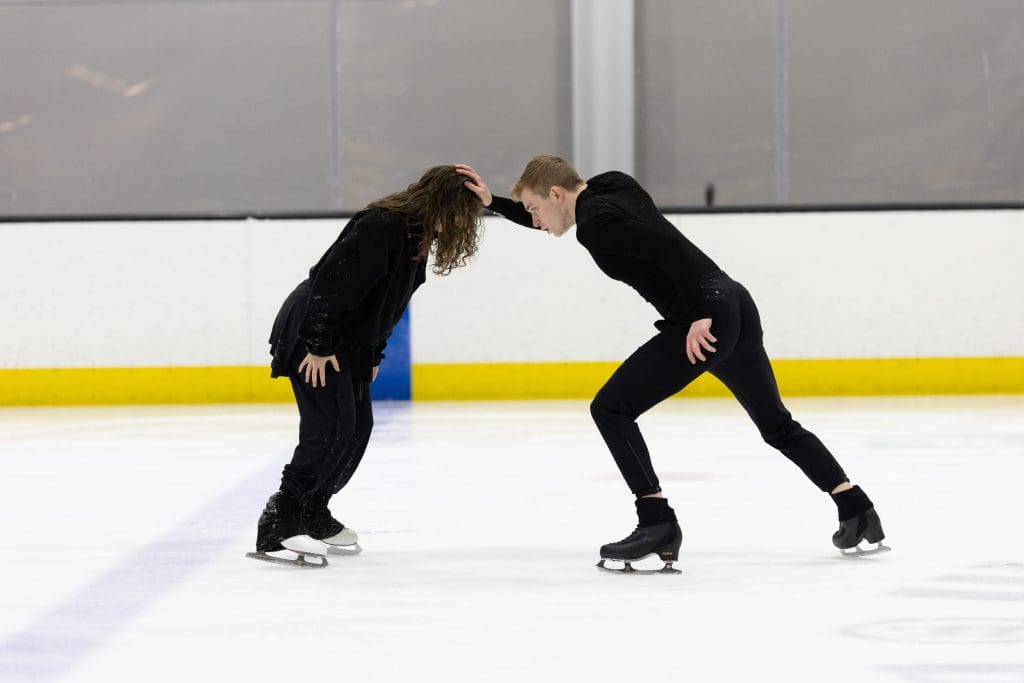
Grohmann described how she developed the concept for her ensemble piece in collaboration with the participants.
“The ensemble choreography (partition 2.0), prepared especially for the festival, works along protest images from human rights and women’s rights movements. Based on visual material, the individual scenes were developed in collaboration with the group, making the piece as individual as it is unpredictable.”
“IceLab’s choreographic work is process-oriented,” Grohmann continued, “incorporating the dancers’ personal connections to the theme and their own interpretations as well as images provided by the choreographer, which serve as anchors. The dancers are not interchangeable within the process, but bring their own experiences and thus their own ‘signature’ to the piece.”
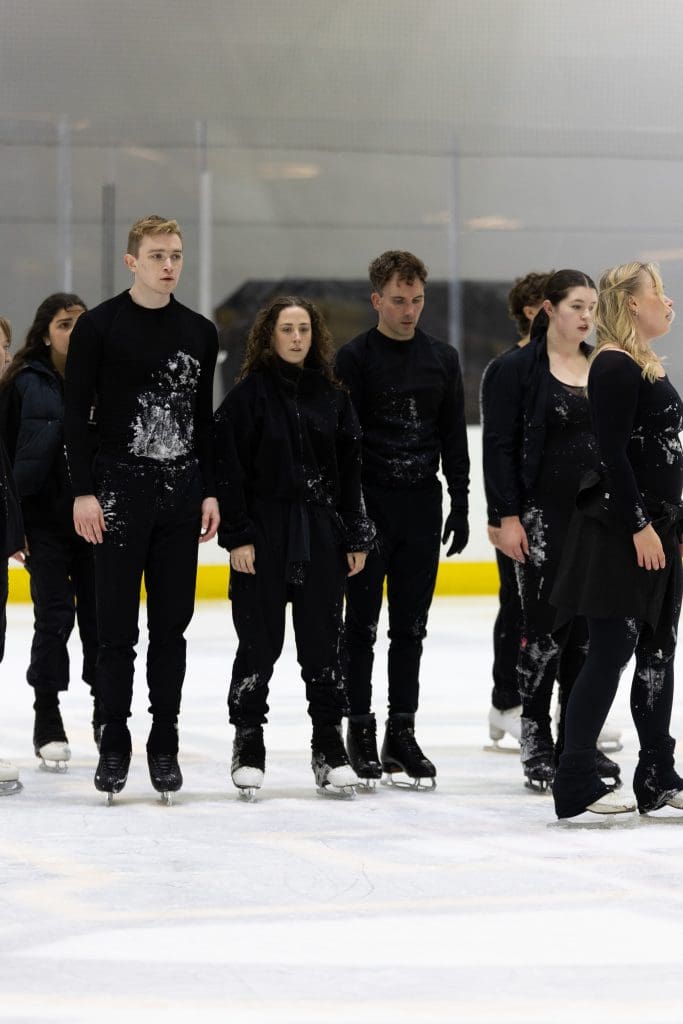
‘Partition 2.0’ began with duos in conflict, one shouting for attention and the other unable to hear. It was viscerally uncomfortable to watch, as the disconnect between the skaters showed the alienation and discord in the world outside the rink.
When toward the end, the skaters who had fallen to the ice many times stood up, covered in ice shavings, they seemed to have emerged from battle – but perhaps the conflict wasn’t negative, or futile.
The experience of the Festival was postive for Grohmann, who shared: “Participating in the other workshops over the weekend, interacting with the American contemporary skating scene and, above all, meeting the open-hearted people in a turbulent country was a great enrichment and allows me to return home with much more hope and lightness than I could have dared to wish for.”
Some of the group numbers explored were more abstract, exploring movement, rhythm and the shapes bodies can make.
The AIT Boston Junior Company had one of the most interesting programs. While not a weekend ensemble piece, it was nonetheless put together with many constraints on the process.
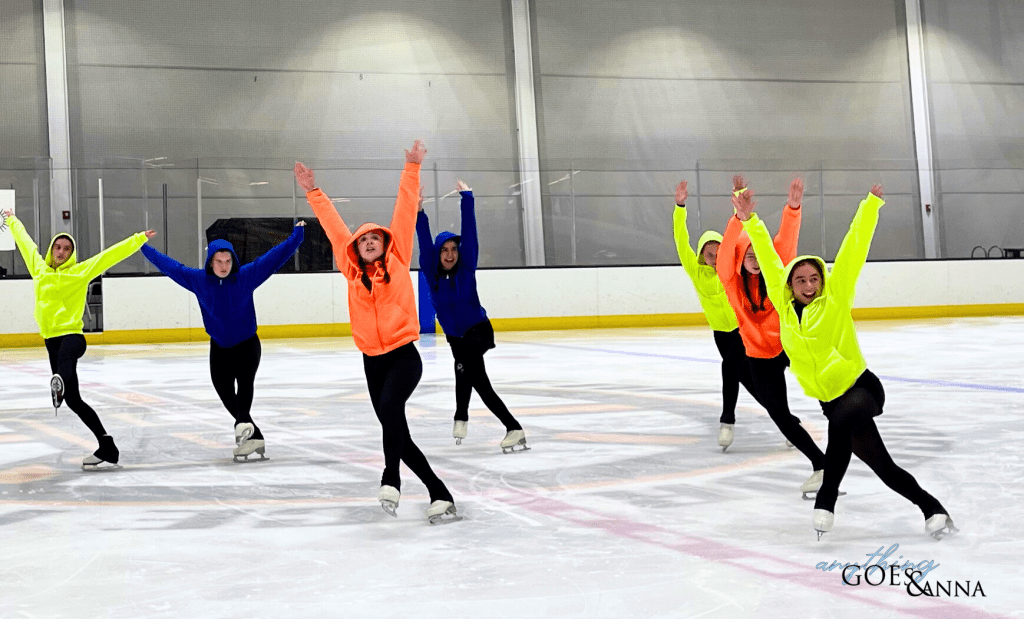
Choreographer Jimmy Morgan noted that it’s always a rush to get the junior company ready “because they’re typically high school kids, so it’s graduation and a lot of them do theater on ice nationals, so towards the end of May we are typically getting it all together. But this year we did a little bit differently, and we had a two-day residency. So we did two rehearsals, pretty long rehearsals, and then had a cleaning day before the Festival.”
“We do things that American Ice Theatre teaches to help the kids understand that they can use [the skills] in a performance environment as well, not just with improvisation,” said Morgan. “Typically, I like to do something that’s a bit more on the abstract side. So this year’s piece was called “Never odd or even.” I was inspired by a palindrome, and so our goal was to challenge ourselves and make choreography that we could watch backward to forward as well, and see if it is just as effective as it is forward to backward. Now we have the video of forward to backward, but my next project is to reverse it and then send it out to the kids, and then we can kind of have a discussion on what they notice, and if things were more effective or less effective [in reverse].”
With more time, he’d like to have the skaters experiment with trying to match the video and skate elements backward – including the choreography with the brightly-colored sweatshirts.
“The reason that I wanted the sweatshirts was because you can do weird things like throwing them or fighting over them, and it looks a little awkward when you go backward or forward.”
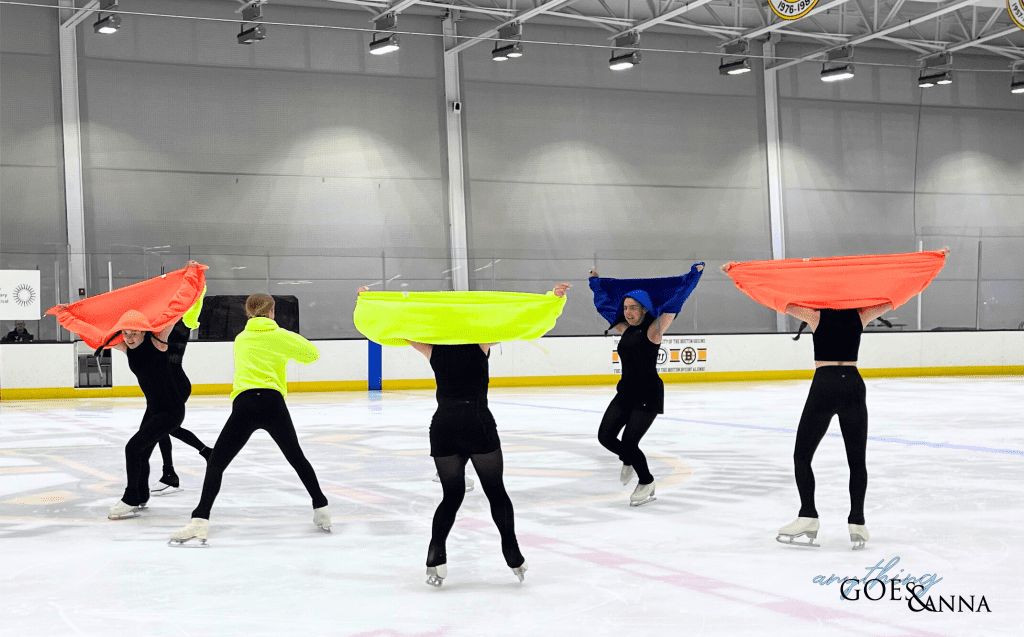
He also noted that the sweatshirts were different from the average skating costume. “Typically, people are in really small, tight clothing that, quote-unquote, show off lines. And I wanted to explore something that’s a little bit more on the baggy side because when you do have extra fabric, you can use it in fun, exploratory ways. So we did that ‘flying squirrel’ moment, or we used them as walls, or as barriers for sliding under. Just anything that we could kind of think of. I even experimented with wearing them backward at one point. But the thing that was important to me, randomly, was the sweatshirt monster, which was the lift. For some reason, I was like, ‘This just needs to happen.’ They were so down for it.”
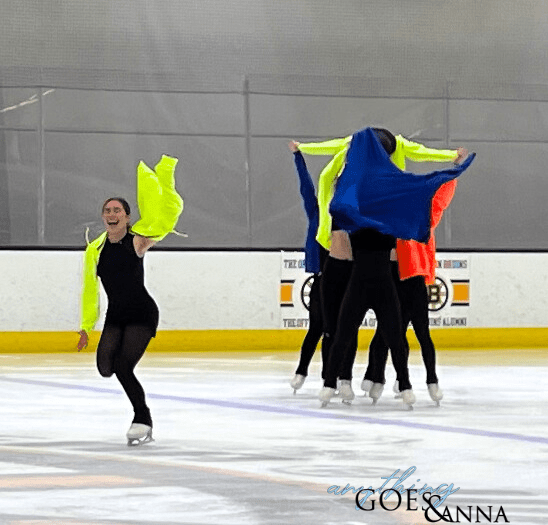
“I think there’s another kind of philosophy behind it where they had the experience of learning something so quickly and then performing it, and having it be like a finished product. It is honestly more indicative of what the ‘real world’ show skating is. Like you got to learn it and then perform it.”
“A lot of them are really nervous because they were like, ‘We haven’t practiced this,’ and I’m like, ‘This is why you all train in contemporary skating. So you can trust your body, that it knows how to do this stuff and just kind of live in the moment a little bit more. And then it just ends up working out, instead of having to stress about everything…I told them that it’s not about the product that we’re producing. It’s about the experience of us making it. So, I want them to take from this experience and grow as skaters, instead of being like, ‘This is the video that On Ice Perspectives made’ – even though we all are excited to see it!”
Throughout the ACSF workshop and performance, I kept thinking about how the skaters blurred the lines between experimentation and final product, practice and performance.
Many, perhaps most, figure skating fans do not skate themselves. I also know a lot of skaters who rarely watch competitive or professional skating. This divide has always seemed odd because in my experience of skating, watching, thinking, talking, and doing all intertwine.
The word that comes to mind is ‘praxis’: the process by which a theory, lesson, or skill is enacted, embodied, realized, applied, or put into practice.
At ACSF, theory and practice merge. Having practiced contemporary skating in the workshop, I could recognize these elements in the work of other skaters. Watching the professionals, I wanted to get back on the ice to try out new ideas.
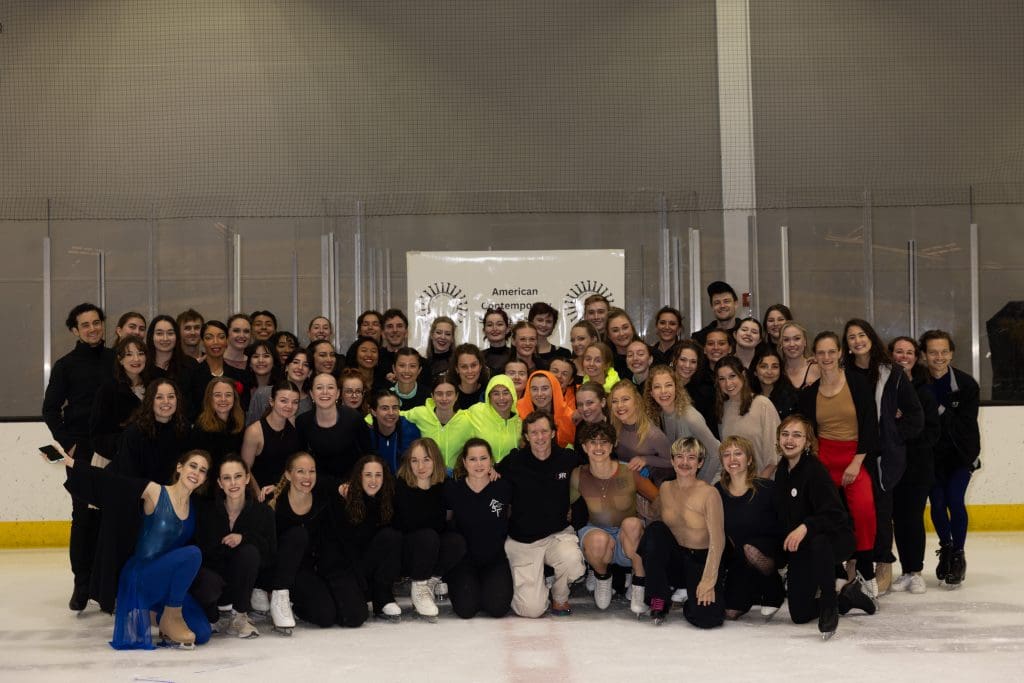
Learn more about American Ice Theatre and the American Contemporary Skating Festival
